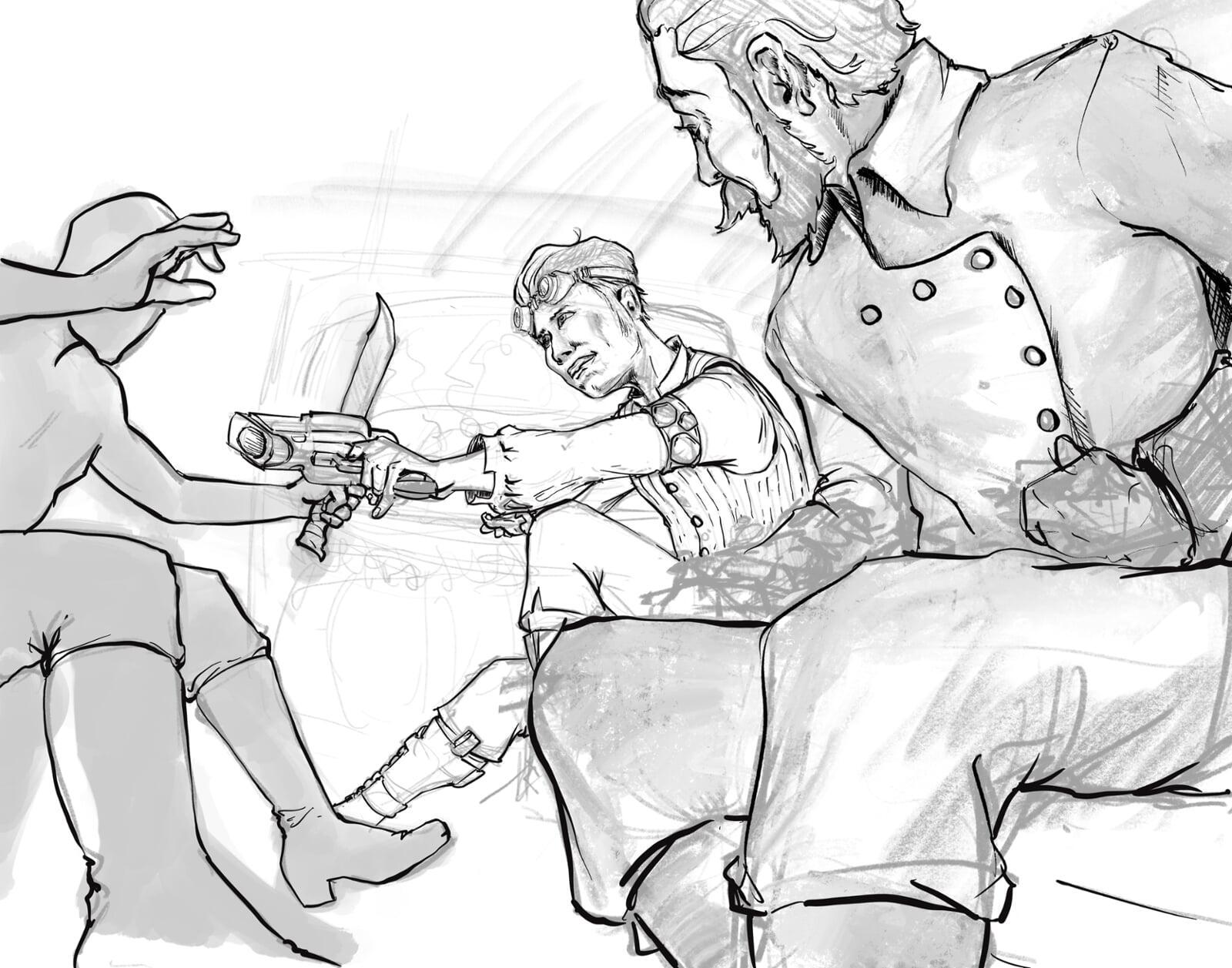Creating 1–6 Pages Using the 8 Pages of Sketchbooking
Creating 1–6 Pages Using the 8 Pages of Sketchbooking
If you’ve ever wanted to make your own manga pages but felt overwhelmed by the blank page, the pressure of perfection, or just didn’t know where to start—this is for you. Today, we’re using the 8 Pages of Sketchbooking as a practical framework to create a short manga sequence (1 to 6 pages). Whether you're a beginner or a seasoned sketchbook veteran, this method helps you break down your creative process into digestible, stress-free steps.
Let’s dive into how you can sketch your way into storytelling bliss—manga-style.
Why Manga Monday?
Manga Monday is your dedicated time to explore storytelling, paneling, and character development through the lens of manga. Unlike a casual doodle session, Manga Monday is about narrative: telling a story through expressive characters, clear compositions, and emotional pacing. Whether you're working digitally or traditionally, setting aside time each Monday to develop a few manga pages trains your visual storytelling skills over time.
But what makes today different is the 8 Pages of Sketchbooking approach—a mindful, modular process that reflects not just what you draw but how you move through the creative flow.
Step Zero: What Are the 8 Pages of Sketchbooking?
Before we pick up our pens, let’s review the sketchbook philosophy guiding us.
The 8 Pages of Sketchbooking is a sequence designed to align your creative energy with a sustainable drawing practice. Inspired by ideas of mindful creativity and artistic evolution, it divides your session (or week) into 8 stages or sketchbook "pages":
Observation
Imagination
Construction
Exploration
Invention
Expression
Narration
Reflection
Let’s use them today to make a 1–6 page manga.
Page 1: Observation – Soaking Up the World
Every manga begins with the seed of truth—something observed, felt, or noticed. Your first sketchbook page is dedicated to observing: people, poses, lighting, patterns, expressions, clothing, settings.
Goal: Root your manga idea in believable detail. Create a “reference moodboard” directly in your sketchbook.
Page 2: Imagination – Freeform Thinking
Now, loosen up. Observation fuels your realism, but imagination fuels your originality. On this page, explore what-if ideas based on what you observed.
Bonus Tip: Use different colored pencils or pens to distinguish between your observational sketches and your imaginative ones.
Page 3: Construction – Building the Bones
With ideas taking shape, it’s time to build the structure. This page focuses on anatomy, perspective, panel layout, and composition. It's about getting your hands dirty with practical forms.
Sketch Idea:
Create thumbnail sketches for your 1–6 page manga.
Use rectangles for panels; stick figures for characters.
Map the emotional rhythm: what’s the climax? What’s the turning point?
Important: Think of this as scaffolding. Don’t worry about making it pretty.
Page 4: Exploration – Try Multiple Variations
You’ve got your structure. Now test the possibilities. This is where you let your manga scene breathe and evolve. Redraw thumbnails. Reimagine a panel. Try a different pose or camera angle.
Sketch Idea:
Try 3 different versions of a dramatic panel.
Flip a character’s expression from subtle to exaggerated.
Explore alternative page layouts.
Goal: Let your curiosity stretch the idea. Push past your first instinct.
Page 5: Invention – Combine and Solidify
On this page, you synthesize your best ideas. Choose your favorite thumbnails, poses, and compositions—and refine them into a more coherent draft of your manga scene.
Sketch Idea:
Finalize your panel layout for pages 1 to 6.
Start roughing in the characters and backgrounds.
Use blue or red pencil to plan, then ink over the top.
You’re not creating final art here, but the draft should be solid enough to follow for inking or final rendering later.
Page 6: Expression – Emotion and Style
Now comes the emotion, the drama, the flair. Use this page to amplify emotion and style—facial expressions, dynamic motion lines, visual metaphors, manga FX (like sweat drops, speed lines, symbolic backgrounds).
Sketch Idea:
Redraw a key moment with more drama.
Experiment with different line weights or inking styles.
Add SFX (sound effects) or katakana/kanji if you’re using Japanese elements.
This is the spirit of manga. Focus on clarity and feeling over realism.
Page 7: Narration – Telling the Story
Here, we look at the flow of panels, dialogue, pacing—all the things that make manga readable. Combine art and writing.
Sketch Idea:
Add speech bubbles and internal monologue.
Time the beats—where does the reader pause?
Sketch how the eye travels across the page.
Read your draft aloud like a play. Does it flow? Does it hit the emotional beats?
You can letter roughly with pencil or digitally with text boxes—whatever helps you test the storytelling flow.
Page 8: Reflection – Review and Adjust
Before calling it finished, reflect.
Sketch Idea:
Circle what works.
Write short notes beside panels you want to revise.
Ask yourself: “What did I learn? What would I do differently next Monday?”
Use this page as a postmortem and a launchpad for your next Manga Monday.
Wrapping Up: From Sketch to Manga Page
At the end of your 8-page sketchbook process, you should have:
A strong concept grounded in observation.
Multiple drafts and ideas explored.
1 to 6 manga pages in rough to clean draft form.
Notes on what to improve or continue next time.
Whether your manga is a romantic confession, a ghost story, or a martial arts duel, the 8 Pages of Sketchbooking walk you through a process that encourages growth, iteration, and expression.
Bonus Tips for Manga Monday Success
Set a timer for each page if you want to work fast and loose.
Use post-its or tracing paper to refine your sketches without redrawing everything.
Draw with friends or share your pages online with the #MangaMonday hashtag.
Cycle back to Page 1 next week—and repeat. The repetition is where the magic grows.
Final Thought
Creating manga isn't about making perfect pages—it’s about progressing your storytelling voice. The 8 Pages of Sketchbooking give you a rhythm you can return to every Monday, like a creative ritual. Whether you finish one page or six, what matters most is that you’ve created something new—and you’ve grown as an artist.
So, sharpen your pencils (or charge your tablet), open your sketchbook, and start sketching your story.
Happy Manga Monday!

